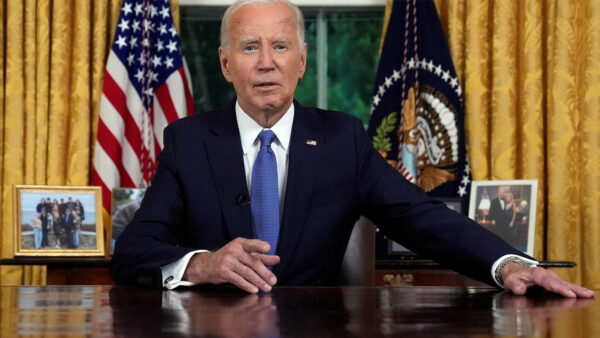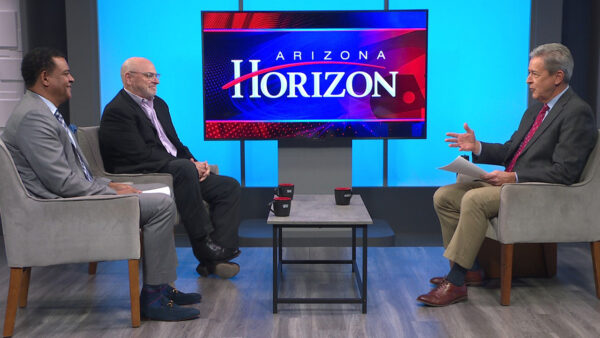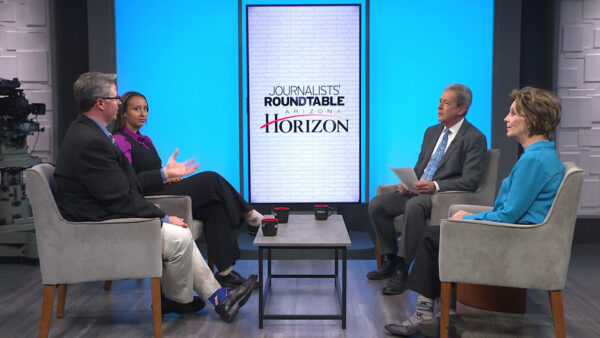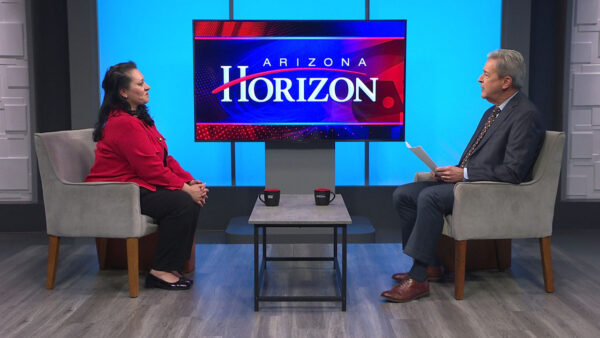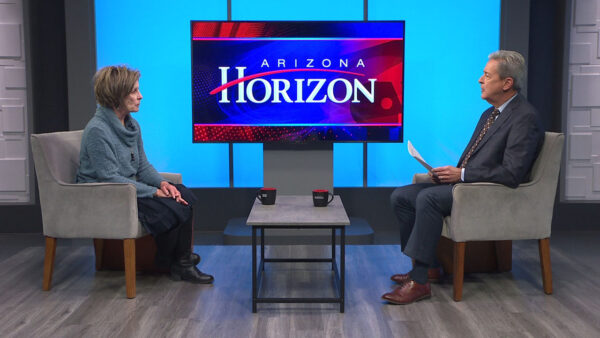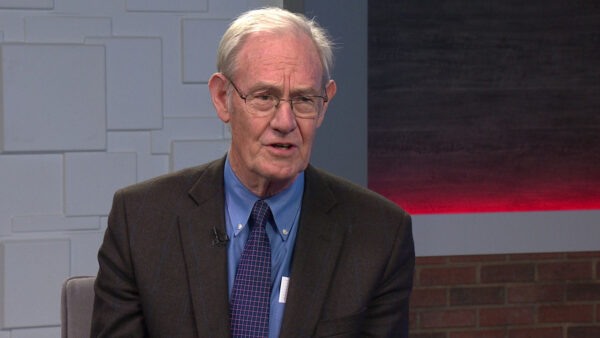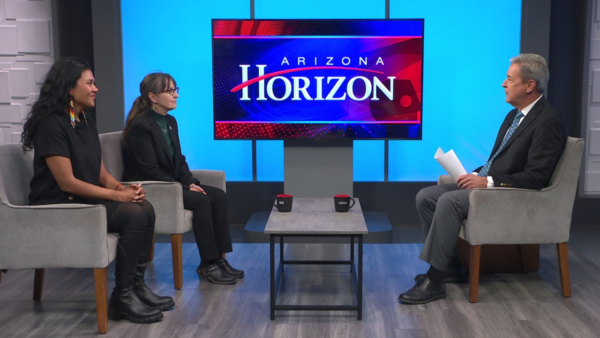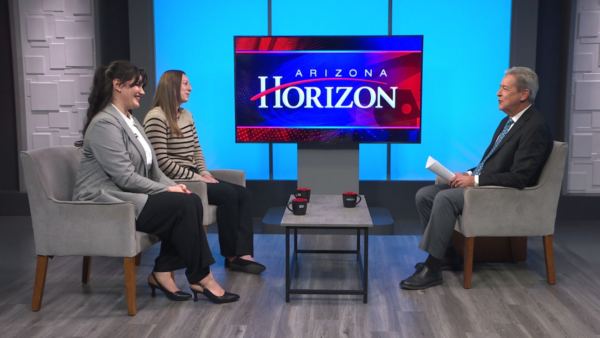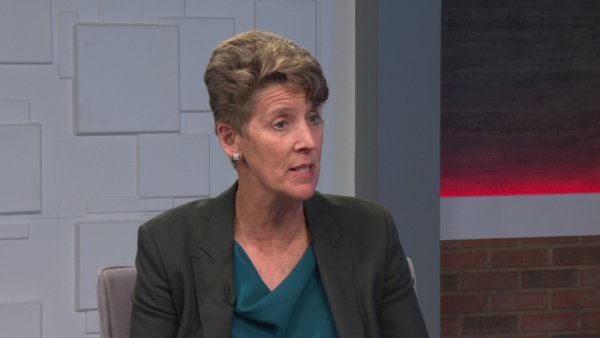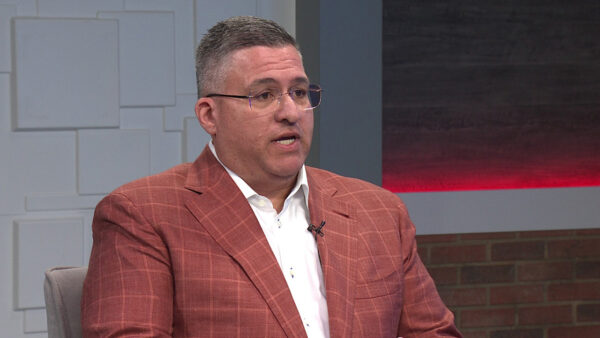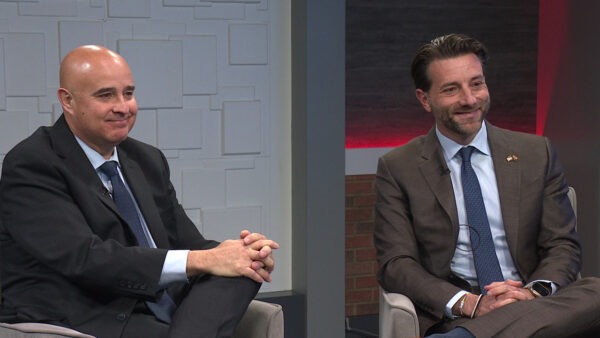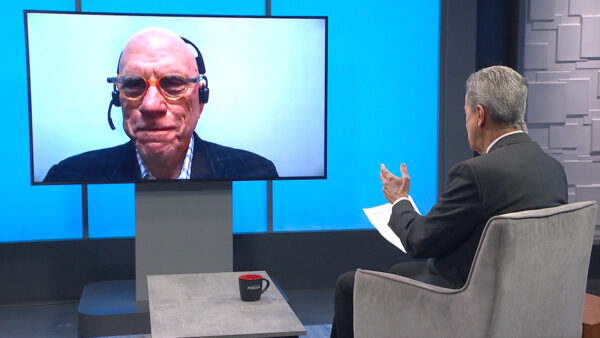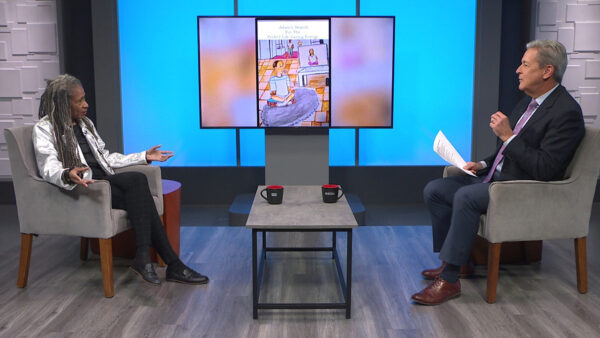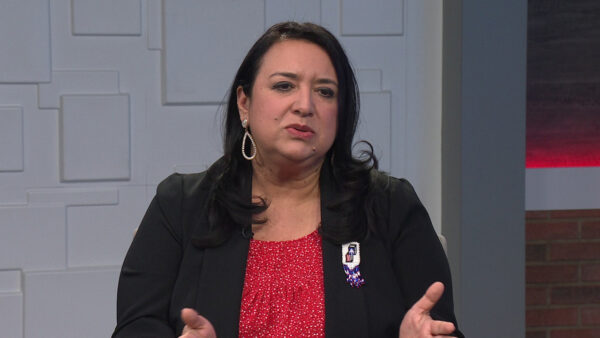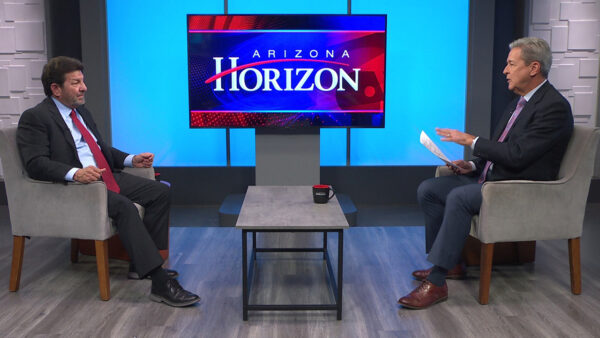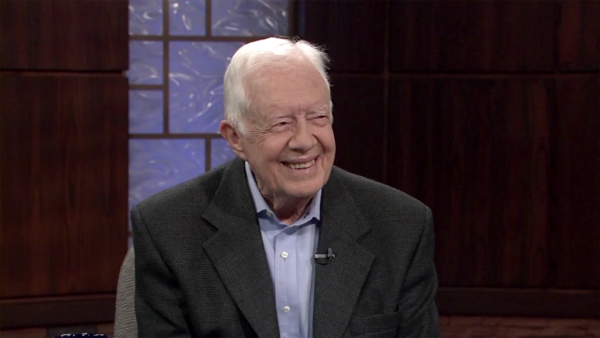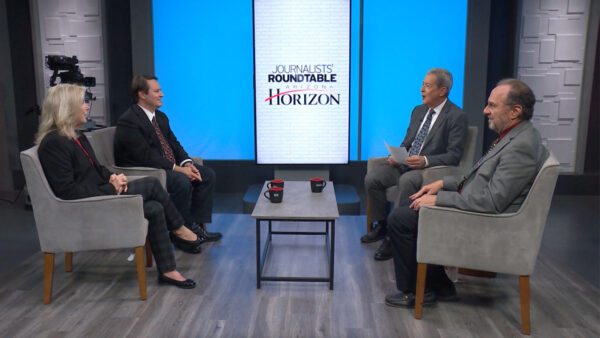Arizona Governor Jan Brewer must decide soon Arizona will establish a state-run health insurance exchange or let the federal government be in charge of providing that service to Arizona residents. It’s a key part of the Affordable Care Act, President Obama’s health-reform law. Suzanne Kinney, Executive Director of the Arizona Chamber Foundation, a research and education arm of the Arizona Chamber of Commerce and Industry, explains how a health insurance exchange works and what happens if Arizona decides not to operate its own exchange.
Ted Simons: Well, Friday, was also a deadline for Arizona and other states to submit a plan for creating a state run health Insurance exchange. However, states now have until December 14th to submit their Plans to the federal government after health and human being Services secretary Kathleen Sebelius extended the deadline earlier today. Governor Brewer hasn't said if she will submit a plan or allow the government to create an exchange for Arizona. Joining me now to clarify the State's options on all of this is Suzanne Kinney, Executive director of the Arizona chamber foundation, a Research and education arm of the Arizona chamber of commerce, and industry. Thank you very much for joining us. Now, we got you here because we Figured tomorrow was the big deadline, and the big announcement. Got an extension, huh?
Suzanne Kinney: that's right. And it was really last-minute Information coming in, so you hear it here first.
Ted Simons: there we go. Ok. And regardless of the deadline, its coming up soon, and what are Arizona's options regarding the health care exchange?
Suzanne Kinney: that's right. So, by that new December deadline, the governor will need to decide whether to, to move Forward with the state-based Exchange, default to federal Exchange, or potentially do the Hybrid model of the state and Federal partnership.
Ted Simons: and this has to be set up completely in toto, if you will, By January 1st of 2014?
Suzanne Kinney: that is the date when they need to be live and Operational. There are several other Milestones between now and then. For example, open enrollment would occur in October of 2013.
Ted Simons: and now you mentioned the Possibility of a joint exchange, Is that some, the hybrid kind of A thing? Is that -- how does that work?
Suzanne Kinney: that was not originally one of the choices available to States. It was something that was offered up later on. But, basically, under a partnership, the majority of the Decisions would still be made by the federal department of health and human services. The states would do some Functions like consumer Assistance. Managing the call centers. That type of activity, as well As plan management. Meaning, oversight of the health Insurance plans that sell the Product on the exchange.
Ted Simons: so regardless of whether it's a state run exchange or federal Run exchange or something in Between, governor has to make a Decision and the legislature has to approve this, correct?
Suzanne Kinney: that's right. The governor would need to Signal her intent, but then there would be certain things that the legislature would have to do. Such as determine what the Funding source for the exchange would be, and decide where it would be housed, in an existing Agency of government or in a, a New nonprofit or somewhere else, and several other decisions.
Ted Simons: and I guess, decide whether they want to agree with the Governor's decision.
Suzanne Kinney: that's right.
Ted Simons: she says, state and they say No, you have got problem.
Suzanne Kinney: you do, indeed.
Ted Simons: let's talk with the state run Exchange. Some of the benefits, some of the concerns.
Suzanne Kinney: the benefits of a state run Exchange, is that it would allow Maximum flexibility within the Parameters of the affordable Care act. So, for example, states would be Able to choose which insurance Providers can sell a plan on the Exchange. And if we have a federal model, then that decision will not be Up to us, and it's possible that the federal government would decide to limit the number of Insurers, thus reducing the Choice for consumers.
Ted Simons: in a state run exchange, how Much, how much federal Supervision would there be over A state run plan?
Suzanne Kinney: Well, basically, the Affordable care ac sets certain Parameters within which the State can make decisions. So, the state would not be able to decide what the premium Subsidies or tax credits were. Those are already stipulated in the law. So, there is some factors the State doesn't get to choose. But, there are many that they do. The biggest one is probably the Choice between market Facilitator or an active Purchaser. So, the active purchaser role is one where the government would really get more involved in Terms of, setting -- negotiating Prices between insurers, and Health care providers. And deciding who can participate and self-product on the Exchange. A lot of other decisions like that. The market facilitator has just a much reduced role for Government.
Ted Simons: basically, a facilitator.
Suzanne Kinney: exactly. Providing the choice, or allowing the, the consumer to see the choices available, Setting up the infrastructure. On the website. And those types of decisions.
Ted Simons: as far as federal assistance for state run plan, I mean, you talk about the legislature having to figure out where the Money is going to come from. Does it differ if it's a state Run plan as opposed to a federal Plan as far as federal Assistance is concerned?
Suzanne Kinney: In terms of the financial Aspect of federal assistance, it would not make much of a Difference. So, consumers and employees of Small businesses who purchase Plans on the exchange would have the same tax credit subsidies available to them. One of the big questions is on the issue of Medicaid expansion, and what role the federal Government would play in setting that level on federal exchange versus a state exchange. And that's something that there is not a lot of clarity on it at this time.
Ted Simons: That's a big one. That would hit the state very Hard. And we don't really know, do we?
Suzanne Kinney: we don't know, what we do Know is that, is that there Could potentially be a gap Between those individuals who, Who receive Medicaid, which we Call access in our state, and Those who are eligible for the Various subsidies for our state Chooses not to expand Eligibility, or to return to the 100% that we had before we froze Eligibility in the program.
Ted Simons: if the state decides whether it's the governor or the Legislature decides, we don't want any part of anything, we're going to let the federal government do what it has to do and what it wants to do. And benefits and concerns with that decision.
Suzanne Kinney: Well, the way we're looking At it is those who oppose the Law have seen the court's Decision and seen an election. So implementation is going to take place. And it's now matter of figuring out which course of action makes the most sense for our state. So, our insurance market, our consumer base, the number of people that we have who are uninsured, is different than other states. And, you know, so we feel that it's best to have the choices Left at the state level, rather than a one size fits all federal Model.
Ted Simons: if one size fits all federal model in terms of an expense to the state, do we have any idea whether it's cheaper, more expensive?
Suzanne Kinney: what the, the HHS has Indicated, is that, is that they Would fund the exchange by an Additional fee or tax on those Insurance providers who sell a Product on the exchange. So, you could imagine that will Most likely be passed along to the consumers by way of higher Are premiums. If we go the state route, our Legislature will need to decide what the appropriate funding Source is.
Ted Simons: Interesting. And we're talking about a health Insurance exchange for those who aren't covered at work or aren't covered in other ways, correct?
Suzanne Kinney: that's right so initially, it will be individuals and Employees of small businesses who are eligible to buy their Insurance on the exchange. However, by 2017, it will be opened up to employees of all Sizes of companies that meet the various wage and other Parameters.
Ted Simons: So employees and, and/or Companies.
Suzanne Kinney: that's right. So, there are certain criteria for, for small businesses, and those are, basically, around the Average wage that they pay their employees. Now, one of the trends that a Number of folks are concerned about is the possibility that some businesses will reduce the Hours for their workers so that they fall below the full-time Threshold of 32 hours.
Ted Simons: if they fall below, where do they go?
Suzanne Kinney: That's hard to say. Those individuals will still be required by the individual Mandate to have health Insurance. Depending on their salary, whether they have two or three Jobs. They may or may not be eligible for subsidies that could help to cover the costs of a policy.
Ted Simons: But that would be who the Exchange is for, is it not? If you cannot get covered at Work, the exchange is there, and you may be able to find what you need provided you can figure out what you are looking at.
Suzanne Kinney: You might be able to, and it will depend on the person and their family income.
Ted Simons: so, we talked about, you know, the benefits and concerns regarding state run coverage and the federal run exchange. The hybrid model in between, that really is -- that's a vague Kind of a thing, in it?
Suzanne Kinney: it is, and so far three States have indicated that they prefer that choice. So --
Ted Simons: in other words, but, you know what; you could possibly see that because for political Purposes, a lot of folks in Government are simply against this particular health care Reform. This particular aspect of health care reform. Politically, they may say no, But there may be wiggle room in between, would there not? And you have other aspects to be concerned about.
Suzanne Kinney: And i think that some of those key choices, though, may not be available in the Partnership model.
Ted Simons: ok.
Suzanne Kinney: in terms of who is on the Board of the exchange, and whether it's the market Facilitator and active Purchaser, where in government It is housed and financed. Some of those core decisions would still not be available to States if they do the Partnership route.
Ted Simons: so the governor decides in December, legislature takes it Up and decides whether it's Thumb's up or down and by January 1st of 2014, ball game Is on?
Ted Simons: this is moving very quickly.
Suzanne Kinney: it sure seems like it.
Ted Simons: it's good information, I Think a lot of folks are Confused but if you are covered Already at work, this would not Necessarily apply to you unless Your work says, they are not Going to cover you anymore.
Suzanne Kinney: If you work for a larger Employer it would not directly apply to you immediately. There may be broader Implications for our health Insurance market. But you would not be on the Exchange for the first three Years.
Ted Simons: well, it's good to have you here, and we'll see what happens when the next deadline approaches, and that one is, no doubt, moved. So, thank you for being here. We appreciate it.
Suzanne Kinney: it's my pleasure.
Suzanne Kinney:Executive Director, Arizona Chamber Foundation;
